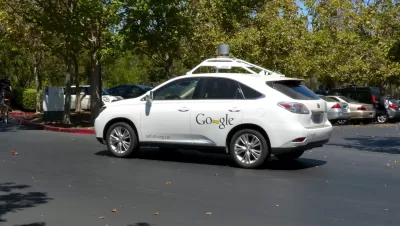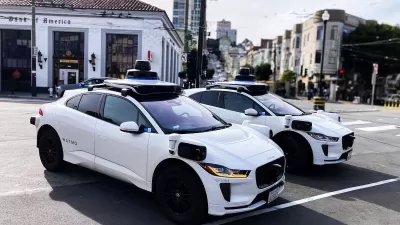A pair of articles sounds separate warnings about what a future of autonomous vehicles will mean for law enforcement and fuel consumption. The warnings are far from the utopian ideal that many desire for the technology.

Writing for Bloomberg, Alan Ohnsman reports that Toyota (one of the companies developing driverless technology), "said the appeal of autonomous cars carries the risk of adding to urban sprawl and pollution as they may encourage commuters to travel farther to work." That prediction came from Ken Laberteaux, senior principal scientist for Toyota’s North American team studying future transportation, in attendance at the Automated Vehicles Symposium earlier this month in San Francisco.
Writing for The Guardian, Mark Harris reports on the contents of an unclassified but restricted report obtained by the The Guardian under a public records request: "the FBI predicts that autonomous cars 'will have a high impact on transforming what both law enforcement and its adversaries can operationally do with a car.'"
"[The report] directly contradicts the message that many developers of self-driving vehicles are trying to communicate: that these cars – immune from road rage, tiredness and carelessness – can be even safer than human operators."
FULL STORY: Automated Cars May Boost Fuel Use, Toyota Scientist Says

Planetizen Federal Action Tracker
A weekly monitor of how Trump’s orders and actions are impacting planners and planning in America.

Map: Where Senate Republicans Want to Sell Your Public Lands
For public land advocates, the Senate Republicans’ proposal to sell millions of acres of public land in the West is “the biggest fight of their careers.”

Restaurant Patios Were a Pandemic Win — Why Were They so Hard to Keep?
Social distancing requirements and changes in travel patterns prompted cities to pilot new uses for street and sidewalk space. Then it got complicated.

DC Area County Eliminates Bus Fares
Montgomery County joins a growing trend of making transit free.

Platform Pilsner: Vancouver Transit Agency Releases... a Beer?
TransLink will receive a portion of every sale of the four-pack.

Toronto Weighs Cheaper Transit, Parking Hikes for Major Events
Special event rates would take effect during large festivals, sports games and concerts to ‘discourage driving, manage congestion and free up space for transit.”
Urban Design for Planners 1: Software Tools
This six-course series explores essential urban design concepts using open source software and equips planners with the tools they need to participate fully in the urban design process.
Planning for Universal Design
Learn the tools for implementing Universal Design in planning regulations.
Heyer Gruel & Associates PA
JM Goldson LLC
Custer County Colorado
City of Camden Redevelopment Agency
City of Astoria
Transportation Research & Education Center (TREC) at Portland State University
Camden Redevelopment Agency
City of Claremont
Municipality of Princeton (NJ)





























